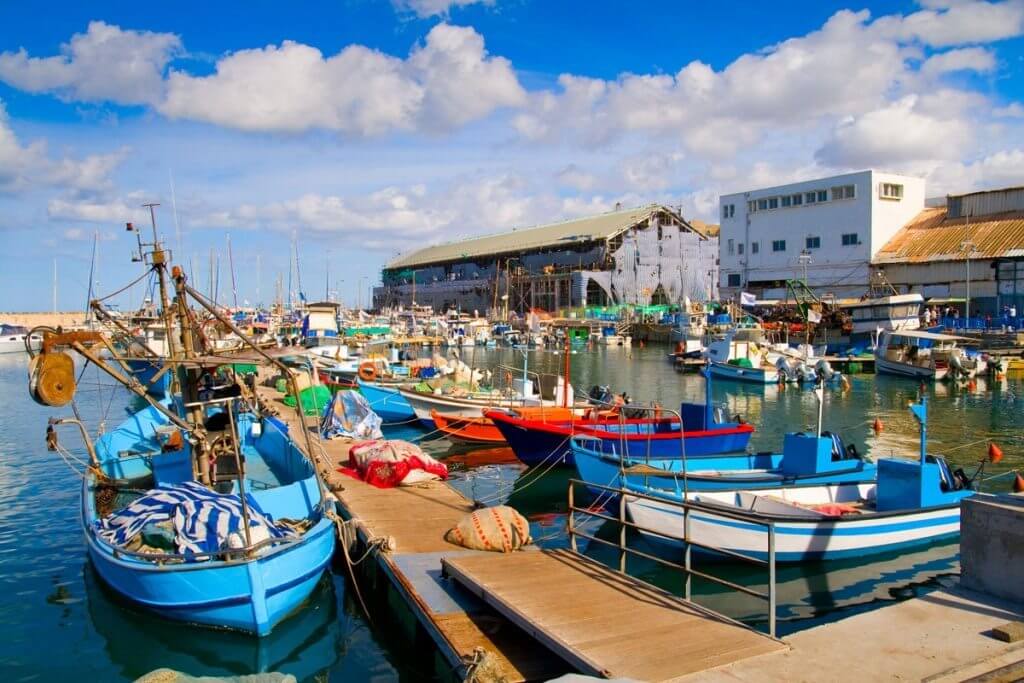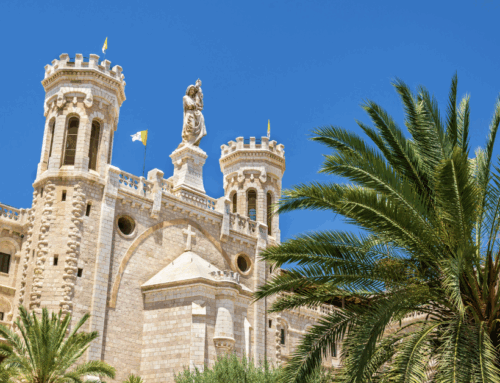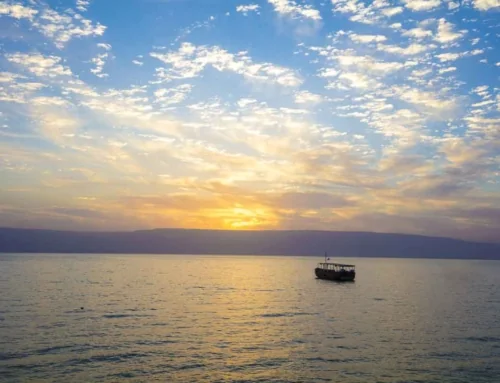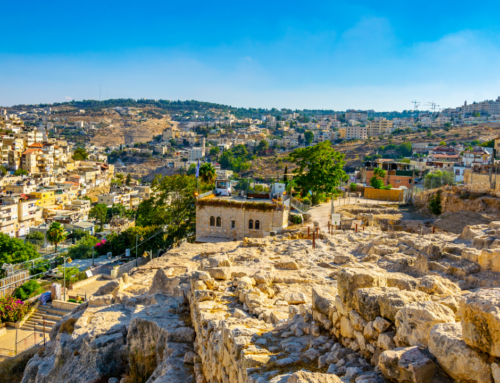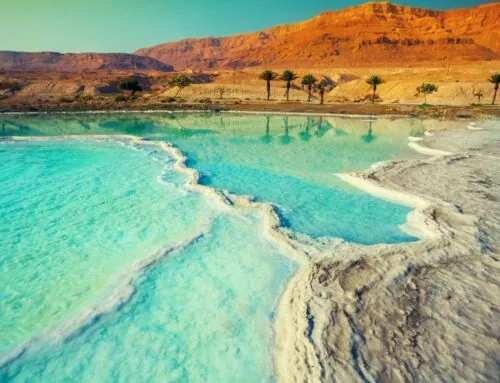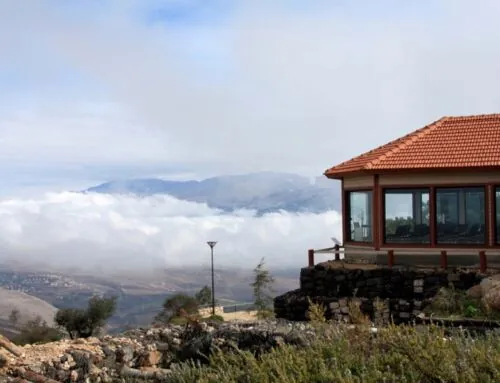When you arrive in Israel, one of the first things you will see when you get there is no ruins or archeological hot spots, but a big expanse of blue beauty. This body of water might look like any other body of water in the world but it’s so much more important than just that. This is the famous Mediterranean Sea.
The Mediterranean Sea is connected to the Atlantic Ocean and almost completely enclosed by land. It is about 970,000 square miles and is around 4,900 feet deep, but at points gets as deep as 17,000 feet deep. In addition to it’s coastline in Israel, it also is bordered by Spain, France, Monaco, Italy, Slovenia, Croatia, Bosnia, Lebanon, Montenegro, Greece, Turkey, Albania, Syria, Egypt, Libya, Tunisia, Algeria and Morocco along with other territories and islands.
In Israel, Tel Aviv is located right on the shores of the Mediterranean. This has made Tel Aviv a major tourist destination for non-religious travel in Israel, as people flock to its beaches and nightlife and entertainment have flourished.
In the history of Israel, the Mediterranean has held an important role for millennia. Jaffa, which is adjacent to Tel Aviv is one of the oldest continually used ports in the world. Jaffa was likely established around 3500 years ago and has been occupied by the Egyptians, the Canaanites, The Romans, The Arabs, the Crusaders, the Mamluks, the Ottomans, among others. It’s been one of the most sought after ports by military conquerers due to its great views of the Mediterranean, letting you see incoming threats from far off.
The Mediterranean is so known for fish it even has a diet named for it that encourages the eating of fish. Unfortunately, overfishing has become a major problem in the sea and fish populations have dropped. Conservation efforts are being made to try to increase and preserve the fish populations.
In the Old Testament, the Mediterranean is spoken of often but is referred to as just “the sea”. You can see “the sea” mentioned over 40 times in the Old Testament. It was an important connection to other neighboring lands as well as used for a main source of food and business in the form of fishing. In addition to just being called “the sea” it was also sometimes referred to as “the great sea” or the “western sea”.
Jaffa
Jaffa is mentioned in the Old Testament 4 times as the place near the Tribe of Dan (Joshua 19:46), Where cedars came through to build Solomon’s Temple (2 Chronicles 2:16), where Jonah boarded the boat to flee from God’s commands (Jonah 1:3), and again where cedars came through for the 2nd Temple (Ezra 3:). Peter also spent time in Jaffa, resurrecting Dorcas there (Acts 9:36-42) and where Peter received his vision from God about the clean and unclean animals (Acts 10:10-23).
Caesarea Martima
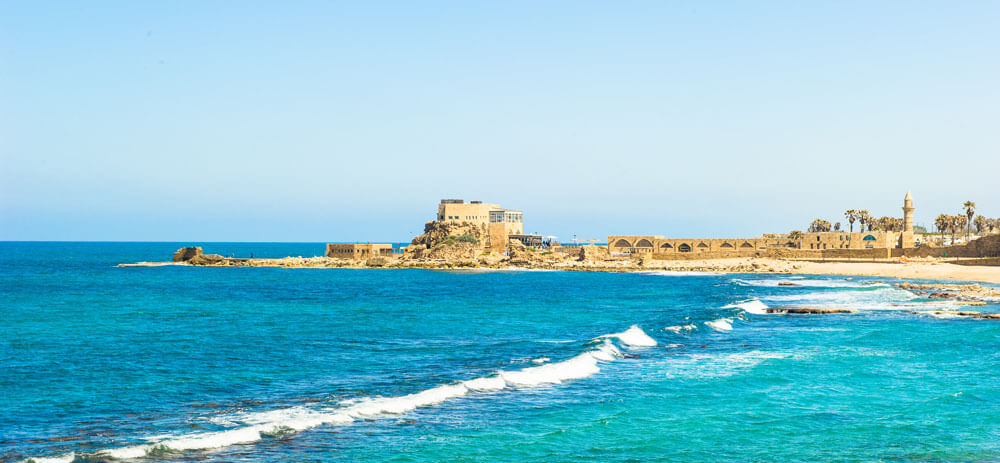
Caesarea Maritima
Caesarea Martima is a favorite site to visit which holds so much New Testament history as well as breathtaking ruins and views of the Mediterranean Sea. Herod the Great (known for his ambitious building) oversaw the building of this city and harbor. It served as the capital of Roman-Judea and was inhabited until the 6th century. It is known and documented through findings at the park that this is where Pontious Pilate primarily lived.
The most amazing part of this site is its importance to the early Church. This is where where God grafted the gentiles in to the church. What an important place. This is where Peter baptized Cornelius and where Paul escaped to Tarsus by boarding a boat and sailing there. Paul also crossed the Mediterranean to take the Gospel to Greece.
Paul also had a famous shipwreck take place in the Mediterranean Sea. According to Acts chapter 27, Paul was being transported to Rome as a prisoner, though he had highly urged the Roman centurion not to embark because the time of year would have been risky. Their ship indeed was wrecked and Paul and the others on board ended up on Malta. There is the possibility that one of the four anchors was found near Malta.
Next time you are in Israel, don’t look at the water and just see water. See the backdrop of God’s story!


